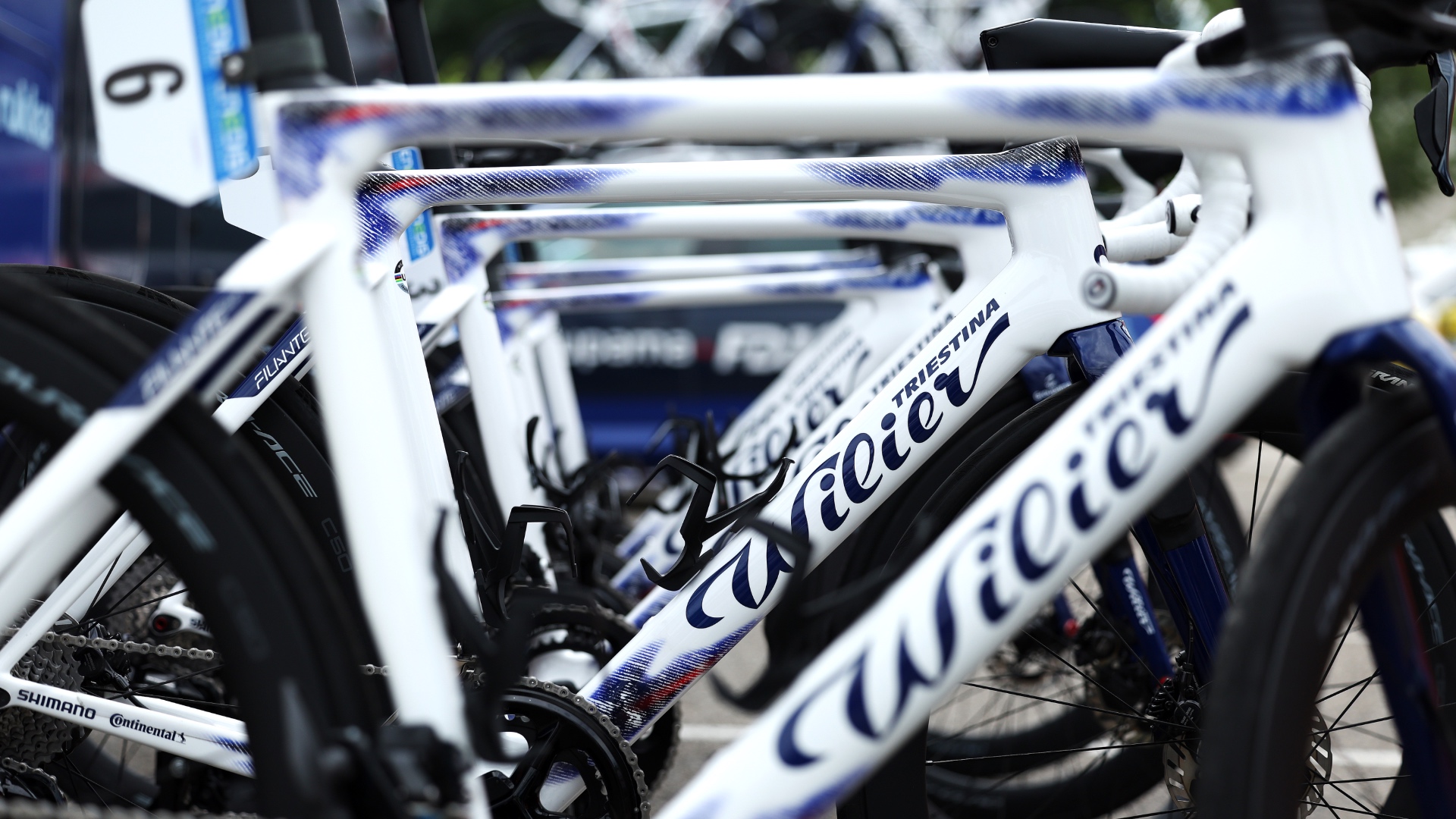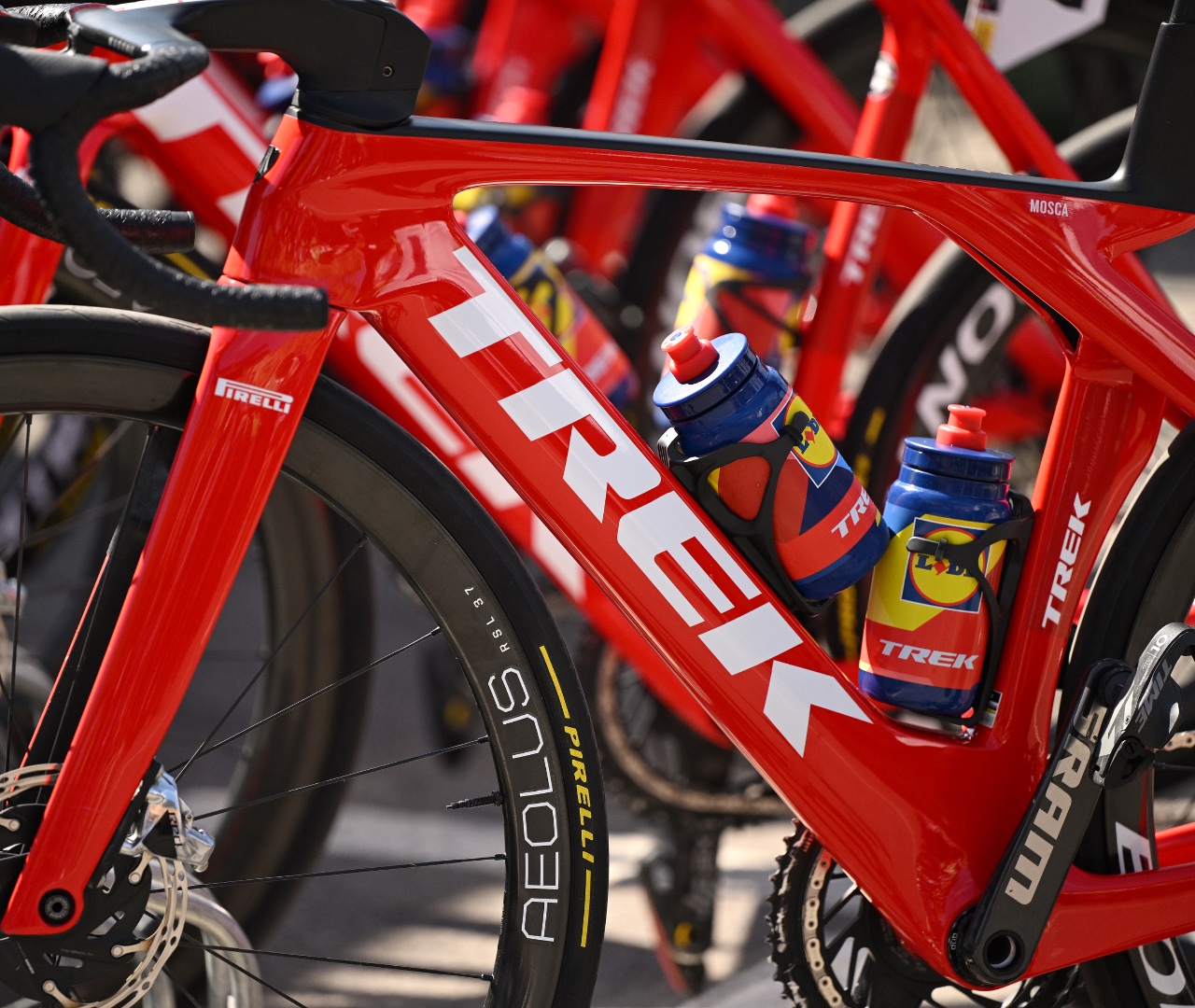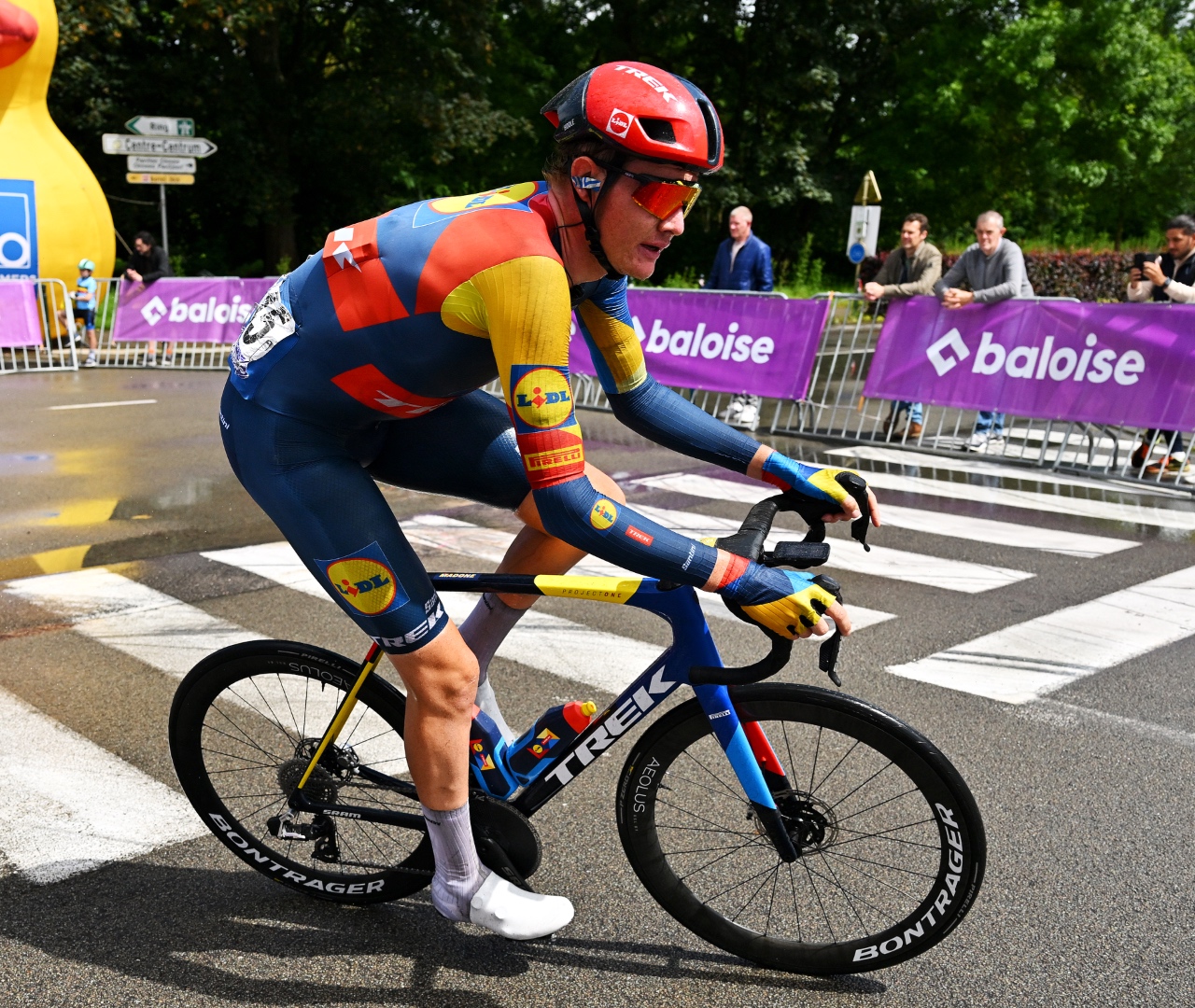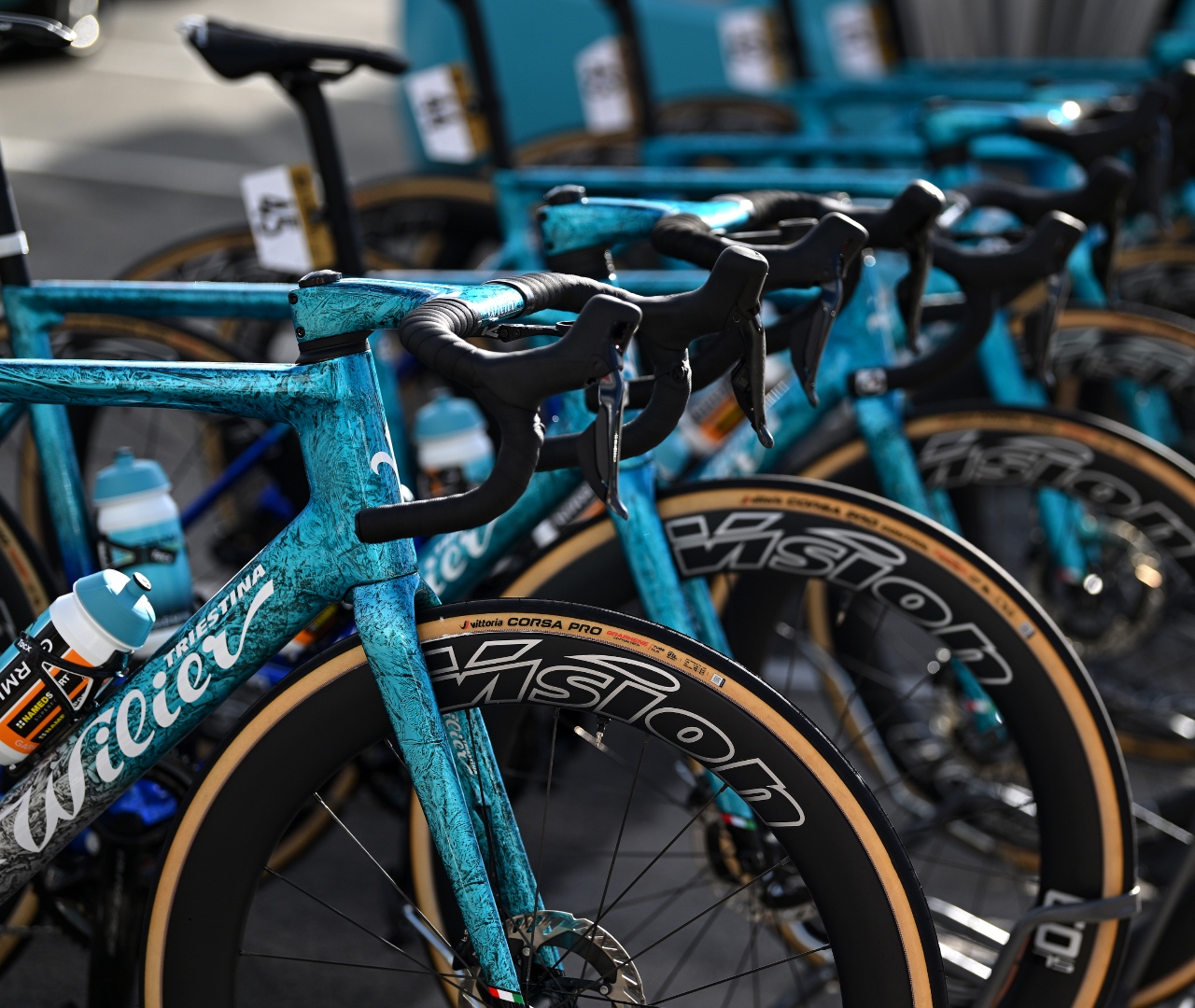Does a frame exhibit the same ride characteristics across all sizes?
Ever wondered if handling and ride experience differ between larger and smaller sizes of the same bike?


No one bike frame will fit everyone, even with the most adaptable bikes. It’s particularly true for performance bikes, where six or more sizes are typical.
But a larger frame would have very different handling and performance characteristics if it were just a scaled-up version of a smaller frame. Additionally, the interaction between the frame, wheels and rider imposes constraints, particularly for small bikes.
So what steps do bike designers take to establish consistent ride feel, comfort and handling between bike sizes, and are they enough to ensure that a smaller rider on a small-sized frame is riding the same bike as a taller rider on a larger frame size?
Materials science

Trek Madone SLR Gen 7 raced by Italian rider Jacopo Mosca of Team Lidi-Trek. Mosca is 173cm tall, so note the small frame triangle and comparatively thick frame members.
The principal reason why a large bike frame can’t just be a sized-up copy of a smaller one is grounded in physics. Hooke’s law works on the tubing of a bike frame, just as it does on a spring. The longer the element to which a load is applied, the more it will deform.
So a larger frame would be significantly more floppy than a smaller one if both were built in the same manner, with the same tube thicknesses. Larger riders are likely to be heavier than smaller ones too, accentuating this effect.
This means that bike designers have to tailor their designs to different frame sizes to ensure consistent performance.
Claudio Salomini, Head of the Innovation Lab at Wilier explains: “Handling is different because of the different geometry, but physical properties also depend on the frame size.”
The latest race content, interviews, features, reviews and expert buying guides, direct to your inbox!
We’ll talk about geometry further on, but for now let’s concentrate on the materials science.
Salomini explains that Wilier designs every single tube of every size to obtain the same mechanical properties. Wilier calls this process Balanced Design and says that it ensures consistent rigidity, handling quality and comfort across its size range. All brands selling performance bikes will have their own version, with its own name.
Wilier is varying both the carbon fiber lay-up and the sizing of its frame tubes between frame sizes.
“We work from both sides. Yes, the carbon layup is different size by size, but we work also on the ‘geometry’ of the tubing, in general making ‘fatter’ tubing on bigger sizes,” Salomini explains.
“Big frames must be ‘reinforced’ because the triangle of the frame is really big. This is the area where our ‘balanced design’ helps us to give the frames the same overall handling,” Salomini continues.
Balanced Design does mean that frame weights increase a little more than would be the case if larger sizes just had longer tubes, he says.

Trek Madone SLR Gen 8 raced by Daan Hoole of The Netherlands and Team Lidi-Trek. At 198cm tall, Hoole is a giant of a rider. With the Gen 8 Madone, Trek tweaked the tube profiles to better suit specific frame sizes.
Other brands follow the same design principles. Specialized calls it Rider-First Engineering and Trek too moved to size-specific tube profiles for its latest Gen 8 Trek Madone. Previous generations of the Madone maintained the profiles of the members regardless of the frame size.
One effect of this is that smaller sizes of the Gen 8 Madone are lighter than in previous generations of the bike.
Christie Sorenson, mechanical design engineer on the Madone Gen 8 project says: “In the past, we had just one shape, a 56, then we would scale from there for all of our bikes. You wouldn't get as light on the small frames as you might expect.
“For the new Madone, we had a second tube shape that we used for the lower half of our size range. We are getting lighter bikes at the smaller sizes, because we are designing specifically for those smaller sizes.”
Trek wind tunnel tested both frame tube profiles and saw similar aero benefits across its size range.
Metal-framed bikes can also be engineered to provide similar ride qualities across the size range, although this may not be the case for lower-priced bikes. The butting in metal tubing, which reduces its thickness in the middle and expands it towards the ends, where welding or brazing takes place, means that simply cutting a single set of butted tubes down to the length required for a smaller frame could result in tube thicknesses that were unsuitable for welding.
Instead, brands such as Columbus sell tubing sets that are butted for a specific frame size.
Geometry difference between sizes

A bevy of Wilier bikes lined up at the 40th Classica Comunitat Valenciana 1969 - Gran premi València 2024. Note just how much smaller the third bike from the left is. Wilier says that ride feel should be reasonably consistent across sizes because it fine-tunes the carbon lay-up and tube profiles.
Differences in ride quality between sizes aren’t just a problem of frame stiffness and aerodynamics though. Handling characteristics change as frame size alters.
Look at a geometry chart for any bike and there are subtle differences between sizes. Some of this is down to simple trigonometry; a longer seat tube will result in a longer reach in a front triangle with the same angles, for example.
It's common for bikes to have the same length chainstays across the size range, as chainstay length impacts both tire clearance and ride feel. It gets more complex with the distance between the bottom bracket axle and the front wheel axle, the front center.
If the smallest frames were just a shrunken version of the larger ones, since the wheel size doesn’t change, toe overlap with the front wheel would become a significant safety issue. So small-size frames typically have a slacker head tube angle than larger ones, to ensure an adequate front center. At the same time, the fork rake increases, which will increase the trail and hence the frame stability.
Wilier’s Salomini explains: “The main issue for smaller-sized frames is the length between the bottom bracket and the front fork axle. You must take care of toe overlap. If you sell a complete bike you use the right crank length (165 mm for example, in order to reduce the problem). To be safer our smaller sizes allow the use of cranks of 170 mm.”
Toe overlap and consistent handling are the reasons why some brands, including Canyon, fit some of their smaller-sized frames with 650b wheels in place of 700c. Even Canyon doesn’t use smaller size wheels on all its small frames though, with the Aeroad CF SL 3XS and 2XS using 650b wheels, while the CF SLX and CFR grade Aeroad frames are designed for 700c wheels on the smallest 2XS frames.
So are larger and smaller cyclists actually riding the same bike? Although bicycle designers take multiple steps to try to provide a consistent ride feel and handling across their size range, ultimately there’s a significant difference in geometry, in particular, between bike sizes. This results in a degree of size specificity in handling, particularly at the larger and smaller ends of the frame size spectrum.
Paul started writing for Cycling Weekly in 2015, covering cycling tech, new bikes and product testing. Since then, he’s reviewed hundreds of bikes and thousands of other pieces of cycling equipment for the magazine and the Cycling Weekly website.
He’s been cycling for a lot longer than that though and his travels by bike have taken him all around Europe and to California. He’s been riding gravel since before gravel bikes existed too, riding a cyclocross bike through the Chilterns and along the South Downs.
